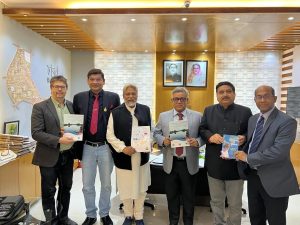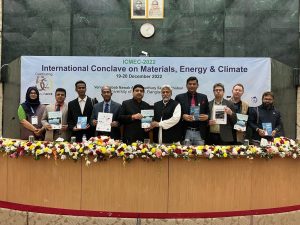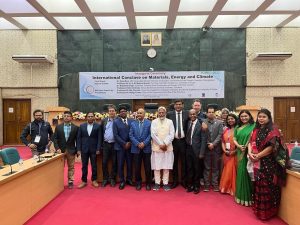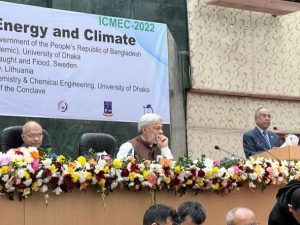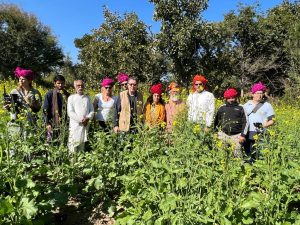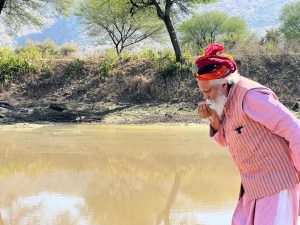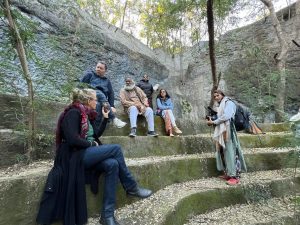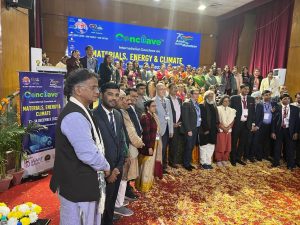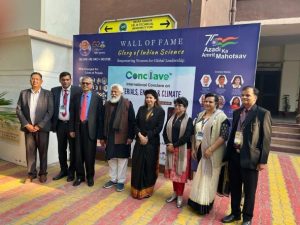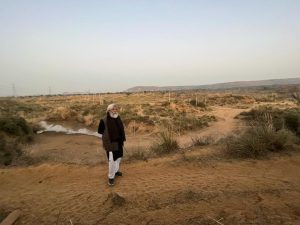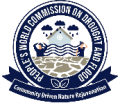The People’s World Commission on Drought and Flood
The People’s World Commission on Drought and Flood (PWCDF) was established on the occasion of World Water Week 2022 in Stockholm, Sweden. Under the Chairmanship of 2015 Stockholm Water Awardee and Magsaysay winner, Dr Rajendra Singh, popularly known as the Waterman of India, the goal is to reduce risks to lives, livelihoods, and ecosystems by building community resilience to extreme weather events such as droughts and floods through community-driven nature rejuvenation. The secretariat of the commission is located in Ulrika, Sweden.
- Reducing risks to life, livelihoods, and ecosystems while increasing resilience through community-led nature rejuvenation
- Prepare an annual report to provides a summary of the state of floods and droughts
- Encourage students to adopt more environmentally conscious
To bridge the gaps between policy, science, knowledge, and community action by bringing together communities, scientists, engineers, technocrats, environmentalists, ecologists, social activists, hydrologists, youth and other stakeholders to reduce impact of droughts and floods and build resilience at ground level.
To bridge the gaps between policy, science, knowledge, and community action by bringing together communities, scientists, engineers, technocrats, environmentalists, ecologists, social activists, hydrologists, youth and other stakeholders to reduce impact of droughts and floods and build resilience at ground level.
- Prepare an annual report that provides a summary of the state of floods and droughts in various parts of the world by capturing perspectives through people’s dialogues and community engagement, as well as discussions with technocrats, scientists, ecologists, environmentalists, agriculturists, and decision makers, among other people;
- Explore, evaluate, and document the various community-centered decentralized human actions that led to nature rejuvenation and resulted in climate resilience;
- Utilize the information obtained from the community to persuade the state to invest in measures to make communities more resilient to the effects of drought and flood; and,
- Encourage students to adopt more environmentally conscious and mindful behaviors by leveraging the educational system.
The area affected, the number of occurrences, and the severity of droughts and floods have all grown significantly over the course of the last few decades. These extreme weather events have been attributed to a variety of causes, including natural phenomena, deforestation, disruptions in river flows and drainage, drying up of life-saving rivers, encroachment of riverbeds and other surface water bodies, excessive extraction of groundwater, and most recently, climate change.
People's World Commission on Drought and Flood
The Commission Structure

The Chairman will be assisted by the Secretary General, Commissioners, Advisory Council and Assembly. The Chair and the Commissioners will together function as the Governing Body.
There will be 19 Commissioners, one from each of the seven continents. Commissioners will look at different regions, agroecological climate diversity, cultural diversity, and places that have been affected by drought and flooding.
The following will be the responsibilities of the Commissioners:
Contribute ideologically to the Commission’s deliberations, framework, and activities;
Monitor the execution of policy decisions made by the Assembly and advised by the Advisory Council; and,
Mobilise resources for the work of the Commission.
The PWCDF Advisory Council will be made up of 150-160 members from various global ecoregions and countries. They will include scientists working on advanced materials, soil, agriculture, water, hydrology, engineers, policy, environmentalists, economists, agriculture, ecology, technocrats, social activists, and others, as well as those working on advanced materials, soil, agriculture, water, and hydrology.
The role of the Advisory Council will be to act as a Bridge between the Governing Council (Chairman and Commissioners) by:
Advising and assisting the Commissioners and the Chairman (Governing Council) on the Assembly’s proposed policies
Assisting the Governing Body with data analysis, people’s perceptions, and perspectives in developing ground-oriented and community-centered solutions for reducing the impact of droughts and floods, as well as climate change, by creating resilience on the ground in various environments;
Respectfully listening to the voices of the people and the government, internalizing and communicating those voices, and then planning how communities can build their capacities to deal with adversity and become more resilient are all important steps; and,
Help the Assembly carry out projects aimed at lowering risks to people’s lives, their ability to make a living, and the health of ecosystems through the revitalization of natural areas as a means of mitigating the effects of drought and flooding, adapting to changing weather patterns, and strengthening community coping mechanisms.
The PWCDF Assembly constitutes the Commission’s true constituency of stakeholders. Assembly members will consist of community leaders who are committed to and have experience with nature rejuvenation and developing resilience, including against the effects of climate change. Assembly members will also include members of the community who have experience in these areas. There will be people among their ranks who have had personal experience with famine and flood.
The members of the Assembly will record the voices of the people, as well as the impacts that communities must endure and the traditional knowledge, they possess in order to become more resilient. Assembly members will provide the Commission with direction and carry out works that protect, heal, and rejuvenate nature while also reducing risks to lives, livelihoods, and ecosystems and contributing to the development of resilience.
As a result, the Assembly, which will have between 325 and 330 members, will be made up of individuals and organizations that:
Understand the phenomena of drought and flood and can assess disasters.
Have realization and internalization of drought and flood and experience in atmosphere building and creating an enabling environment.
Are working in the field and have understanding and/or experience on how to reduce scale, frequency, and intensity of disaster, protect against droughts and floods and build resilience.
Consider nature as sacred, pray to nature, are committed to defending nature, healing nature and the planet using natural means and developing a resilient planet.
Work on water treatment, reducing risks to lives, livelihoods and ecosystems, drought mitigation, flood mitigation, development of coping mechanisms, river rejuvenation, climate adaptation and mitigation through adoption of agricultural processes, climate resilience.
Represent different geographies, cultures, agroecological zones, gender; and/or,
Come from drought and flood affected areas.
Gallery
